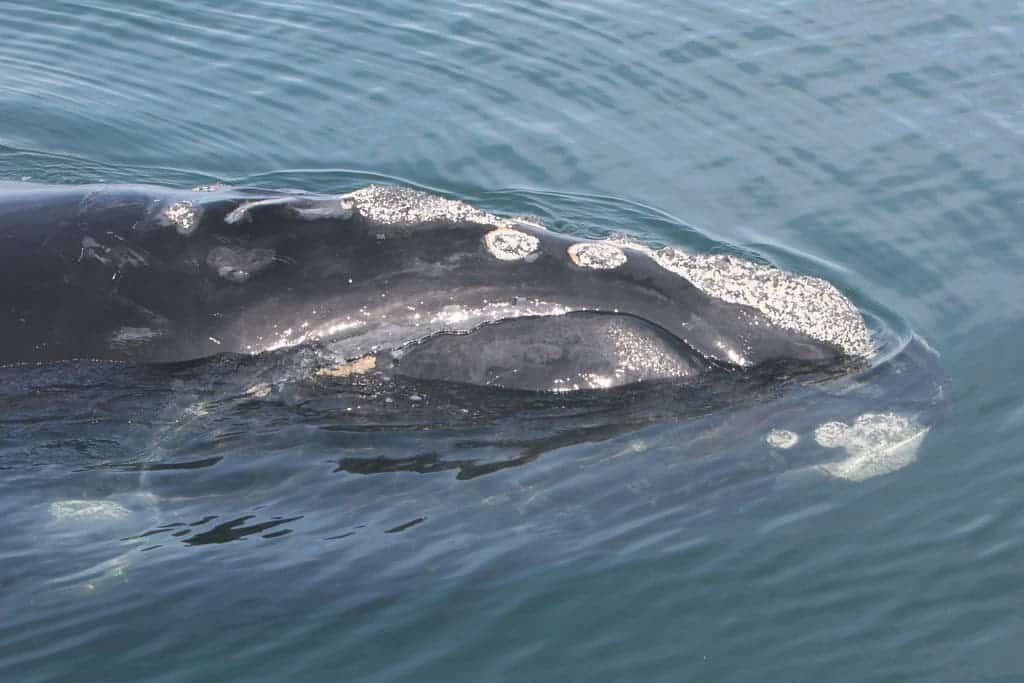North Atlantic right whales (Eubalaena glacialis) are fast approaching extinction, with fewer than 350 individuals remaining and less than 100 breeding females. This is largely because of vessel strikes and entanglement in fishing gear. Now, the US is proposing new rules for vessels off the east coast to slow down much more often.

The National Oceanic and Atmospheric Administration (NOAA) announced the new rules as part of a bigger effort to stabilize and recover this endangered population. This would expand the current mandatory seasonal speed restrictions of 10 knots (19 km/h or 11mph) in designated areas of the ocean and require even more vessels to comply.
In addition, NOAA also introduced a draft roadmap for public comment about on-demand or ropeless fishing gear, describing possible ways to increase the use of this technology in commercial fisheries off the US East Coast. The roadmap includes lessons from fisheries using on-demand gear that is being used around the world.
Current shipping rules focus on a patchwork of slow-speed zones that require some vessels (depending on their size) to slow down for whales. Some of the areas are mandatory, while others are only voluntary. Environmental groups have been warning that boats don’t comply with the speed restrictions and that rules have to be stronger and enforced regularly.
NOAA currently uses two management tools to help protect whales from vessel strikes: the permanent and mandatory Seasonal Management Area (SMA) speed zones in places where whales are expected to be, and the reactive and voluntary Dynamic Management Area (DMA) speed zones when a whale is spotted.
A report by Oceana released in 2021 found non-compliance was almost 90% in mandatory zones and almost 85% in voluntary ones. The marine NGO analyzed vessel speeds from 2017 to 2020 in speed zones established by NOAA on the US Atlantic Coast, calling for the US to expand slow zones and ensure compliance with existing ones.
The challenges for North Atlantic right whales
In 2020, the International Union for the Conservation of Nature (IUCN) moved the whale’s status on the Red List from endangered to critically endangered, the last step before the species is considered extinct in the wild. While grim, scientists and conservationists are still hopeful that the faith of these giants can still be reverted with positive action.
This requires addressing vessel strikes (as now proposed by NOAA) as well as fishing gear entanglements, which can result in injury and death. Whales can also face potential and emerging threats such as impacts from climate change, new and expanded ocean use, such as offshore wild and aquaculture, and ocean noise. The threats whales face from humans are varied, and we’re at the point where immediate action is needed if we want to save this species from going extinct.
The Gulf of Maine, the whale’s main feeding ground, has warmed three times faster than the rest of the world’s oceans. This is causing whales to change their usual haunts as they seek cooler waters, taking them into places without speed limits. Warmer waters also make it harder for whales to find food, which explains the low birth rate.
“Despite the many challenges we face, including climate change, we must find solutions to mitigate the threats to marine mammals while supporting the livelihoods and economies of our fishing communities who put healthy food on our tables,”
Janet Coit, assistant administrator for NOAA Fisheries, said in a media statement.


